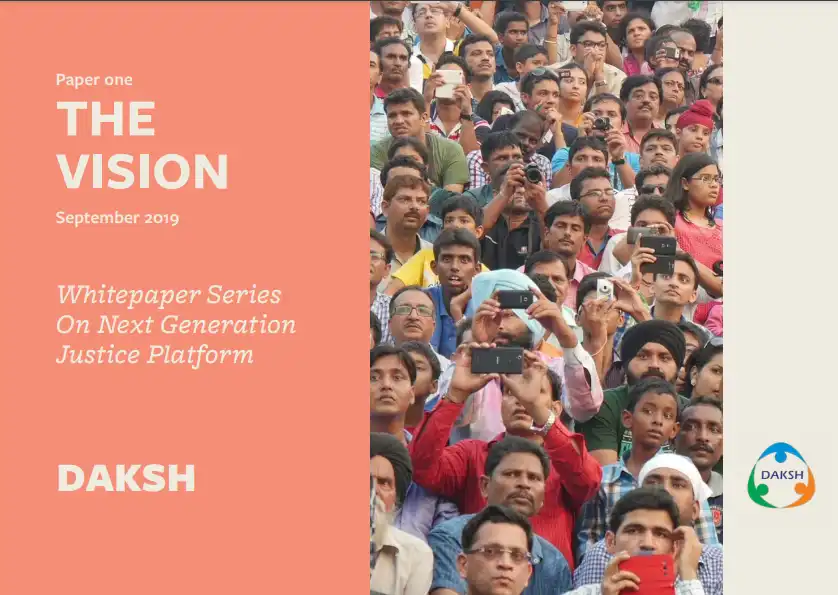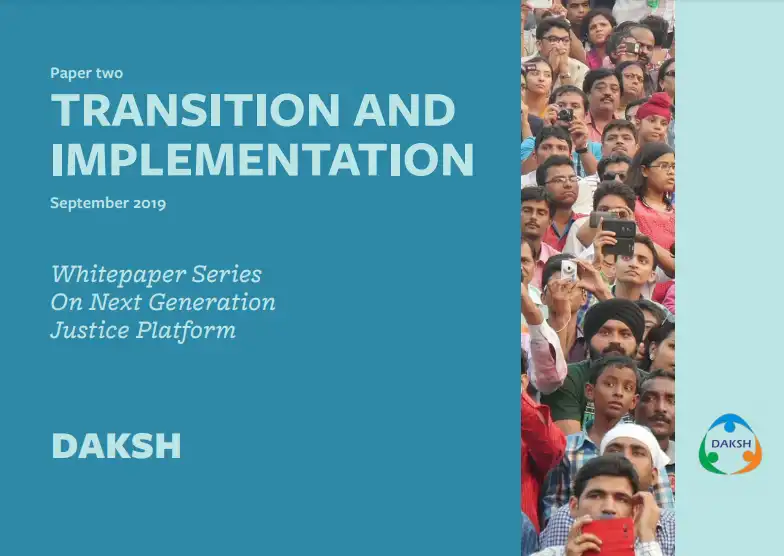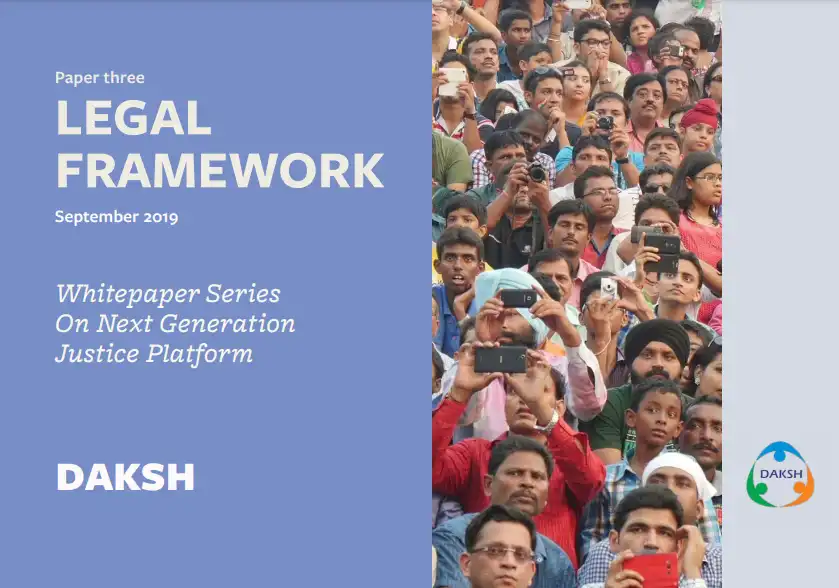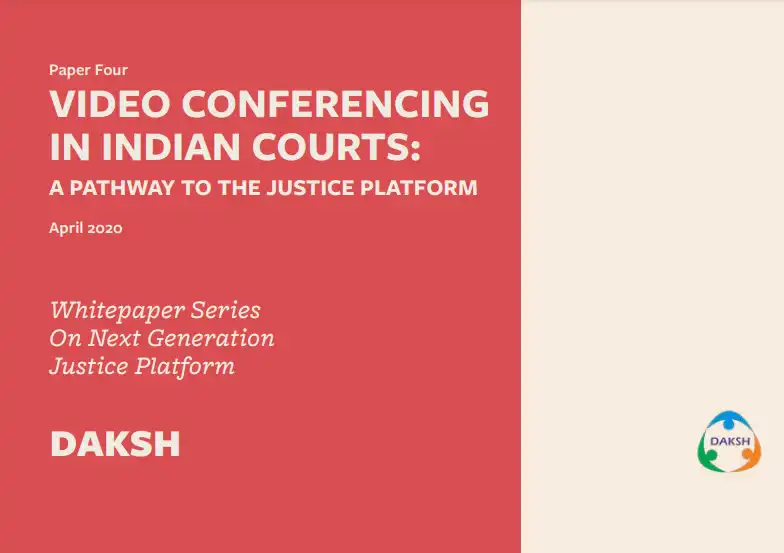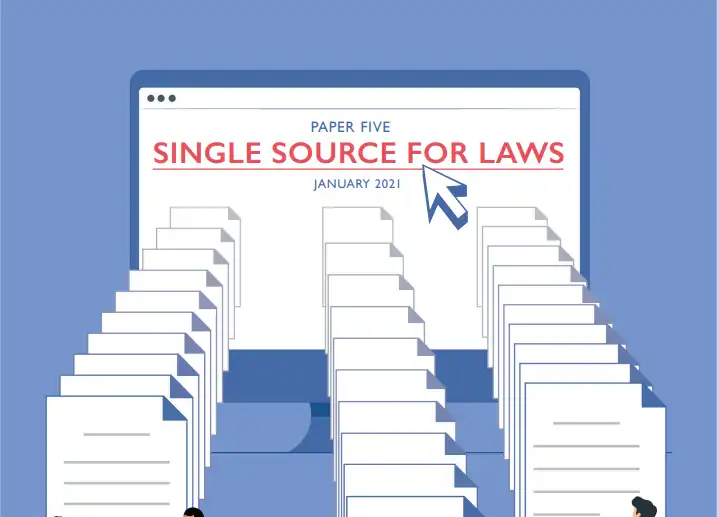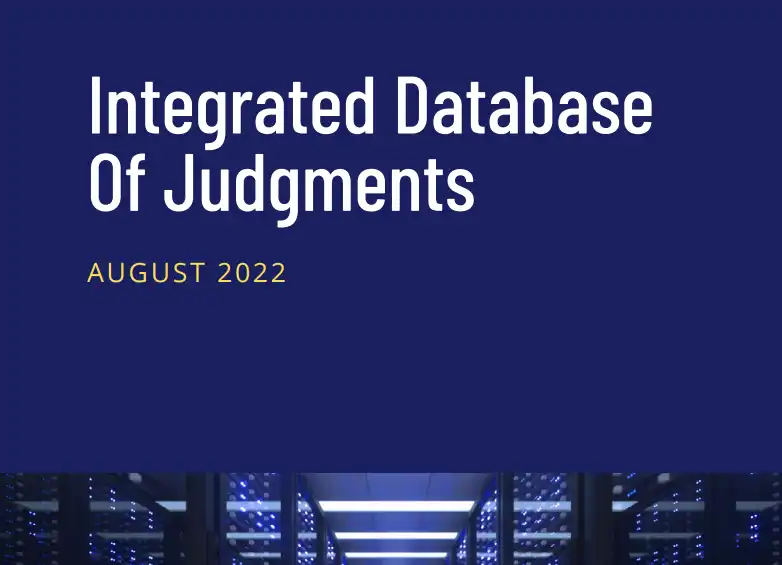

Next Generation Justice Platform
- /
- Our Work /
- Next Generation Justice Platform
The justice system has made considerable advances in adoption of ICT given the scale of its operation and the large population whose needs it must meet. The design of information systems used by institutions such as the Indian judiciary, lawyers, government departments, police, and prison authorities, currently does not exploit the full extent of even current technical capabilities, owing to legislative, institutional, and resource constraints. This whitepaper series provides a roadmap for a transformation of the justice system that is not merely technologically oriented, but which sets goals which the process should fulfill, and proposes strategic, technical, legislative courses of action to reach these goals.
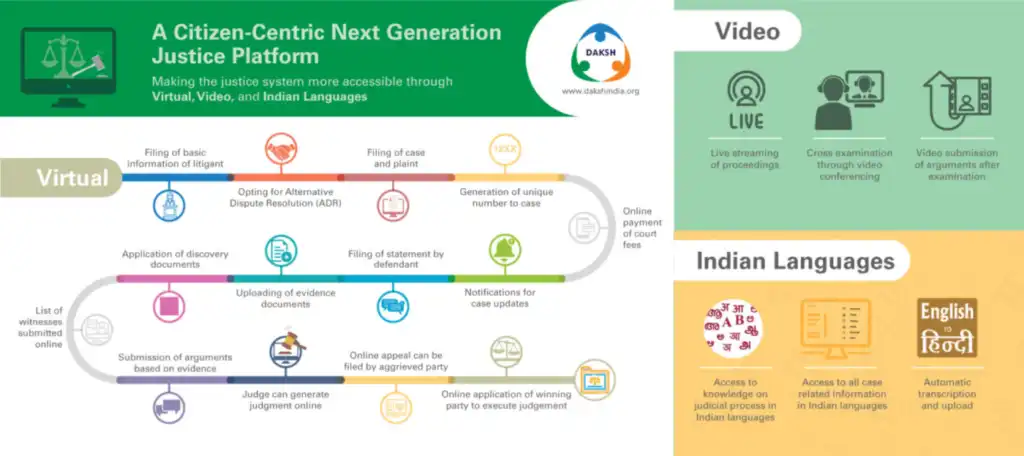
PAPERS
These goals are rooted in principle, rather than potential technical achievements, for two reasons. One is that technology must ultimately serve goals that are socially desirable, and the strategies adopted to fulfill them must then be based on morality and constitutional values. The other is that technology evolves at a pace where any vision for public institutions based on fulfilling technical capabilities will be rapidly outdated, and it makes more sense to tether the vision to something more permanent. These principles form the core of the first paper in the series ( Whitepaper Series on Next Generation Justice Platform, Paper 1: The Vision ), which describes a vision for a citizen-centric justice system.
The second paper in the series ( Whitepaper Series on Next Generation Justice Platform, Paper 2: Implementation and Transition ) lays out the implementation strategies necessary to bridge the technical gap between current systems and those that would fulfill the vision described in Paper 1. These strategies are based on a consideration of the processes that are necessary for the design of the platform to meet its users’ needs and for the implementation to be successful, such as process re-engineering and stakeholder consultation. Effective planning of the sequencing of the implementation is essential for the platform’s success, and the paper discusses concerns regarding the phases of implementation based on the modules that the platform comprises, based on their functions and interdependencies.
The third paper in the series ( Whitepaper Series on Next Generation Justice Platform, Paper 3: Legal Framework ) proposes a legal framework to govern this public platform and an administration structure to manage it. Based on an assessment of past efforts in India and recent but less extensive efforts in other countries, the implementation of a public platform would benefit greatly from legislative backing. The paper proposes a legal framework that mandates migration to the platform; establishes the authority responsible for its creation, implementation, maintenance, and improvement; and provides for both disclosure and protection of judicial data to strike an appropriate balance between transparency and privacy.
The fourth paper in the series (Whitepaper Series on Next Generation Justice Platform, Paper 4: Video Conferencing in Indian Courts) provides an overview of the existing implementation of video conferencing and attempts to create a framework for the implementation of virtual courts in the future. With a countrywide lockdown and the enforcement of social distancing, courts across India are using video conferencing to carry on some of their work. This is driven by a need to ensure citizens continue to have access to justice and to avoid a justice gridlock. This pandemic has highlighted gaps in the capacity and readiness of courts to move online in situations such as these. It has also provided an opportunity for the judiciary to accelerate the process of digitisation and create a framework for working online, as far as possible.
The fifth paper in the series (Whitepaper Series on Next Generation Justice Platform, Paper 5: Single Source For Laws) charts out the prevailing conditions pertaining to access to laws, discusses the relevant factors impacting access and recommends building a single source for laws. A brief insight into the various case laws associated with accessing laws is provided, followed by an analysis of the components, both legal and socio-legal, that are linked to the fundamental issue of accessing laws. The paper engages with institutional and administrative challenges that need to be overcome to build a reliable and authentic single source for laws. The discussion on access to laws will take into consideration the technology and the tools available at our disposal.
These goals are rooted in principle, rather than potential technical achievements, for two reasons. One is that technology must ultimately serve goals that are socially desirable, and the strategies adopted to fulfill them must then be based on morality and constitutional values. The other is that technology evolves at a pace where any vision for public institutions based on fulfilling technical capabilities will be rapidly outdated, and it makes more sense to tether the vision to something more permanent. These principles form the core of the first paper in the series ( Whitepaper Series on Next Generation Justice Platform, Paper 1: The Vision ), which describes a vision for a citizen-centric justice system.
The second paper in the series ( Whitepaper Series on Next Generation Justice Platform, Paper 2: Implementation and Transition ) lays out the implementation strategies necessary to bridge the technical gap between current systems and those that would fulfill the vision described in Paper 1. These strategies are based on a consideration of the processes that are necessary for the design of the platform to meet its users’ needs and for the implementation to be successful, such as process re-engineering and stakeholder consultation. Effective planning of the sequencing of the implementation is essential for the platform’s success, and the paper discusses concerns regarding the phases of implementation based on the modules that the platform comprises, based on their functions and interdependencies.
The third paper in the series ( Whitepaper Series on Next Generation Justice Platform, Paper 3: Legal Framework ) proposes a legal framework to govern this public platform and an administration structure to manage it. Based on an assessment of past efforts in India and recent but less extensive efforts in other countries, the implementation of a public platform would benefit greatly from legislative backing. The paper proposes a legal framework that mandates migration to the platform; establishes the authority responsible for its creation, implementation, maintenance, and improvement; and provides for both disclosure and protection of judicial data to strike an appropriate balance between transparency and privacy.
The fourth paper in the series (Whitepaper Series on Next Generation Justice Platform, Paper 4: Video Conferencing in Indian Courts) provides an overview of the existing implementation of video conferencing and attempts to create a framework for the implementation of virtual courts in the future. With a countrywide lockdown and the enforcement of social distancing, courts across India are using video conferencing to carry on some of their work. This is driven by a need to ensure citizens continue to have access to justice and to avoid a justice gridlock. This pandemic has highlighted gaps in the capacity and readiness of courts to move online in situations such as these. It has also provided an opportunity for the judiciary to accelerate the process of digitisation and create a framework for working online, as far as possible.
The fifth paper in the series (Whitepaper Series on Next Generation Justice Platform, Paper 5: Single Source For Laws) charts out the prevailing conditions pertaining to access to laws, discusses the relevant factors impacting access and recommends building a single source for laws. A brief insight into the various case laws associated with accessing laws is provided, followed by an analysis of the components, both legal and socio-legal, that are linked to the fundamental issue of accessing laws. The paper engages with institutional and administrative challenges that need to be overcome to build a reliable and authentic single source for laws. The discussion on access to laws will take into consideration the technology and the tools available at our disposal.
MEDIA
Leah Verghese and Surya Prakash from DAKSH India talk to host Pavan Srinath about how a 21st-century justice platform can transform access to justice for Indians.
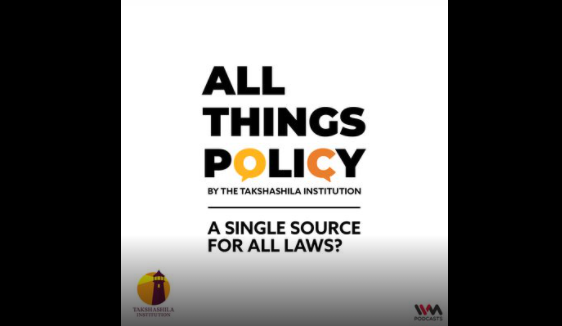
Sandhya P R From DAKSH talks to Takshashila’s Sarthak Pradhan about the idea of ‘A Single Source for Laws’.
A summary of the whitepapers can be found here:
A summary of the whitepapers can be found here in hindi:
A presentation depicting these ideas can be found here:
News and Events
https://www.dakshindia.org/building-a-single-source-for-laws-in-india/
https://www.dakshindia.org/examining-the-use-of-video-conferencing-in-indian-courts/
https://www.youtube.com/watch?v=u0gmy358xLQ
https://www.dakshindia.org/the-judiciary-should-be-more-technology-oriented-in-this-time-and-age/
https://www.youtube.com/watch?v=-er__V77yNA&t=1s
RECENT UPDATE

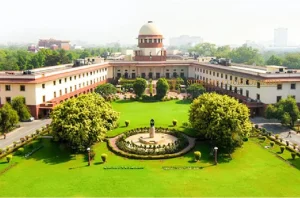
Lessons for Judiciary from Space Sector
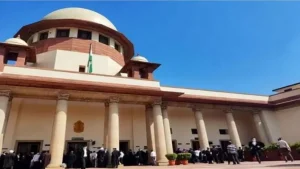
The missing piece in India’s reform story—a strong tribunal system

Fast-track courts may not be the cure

-
Rule of Law ProjectRule of Law Project
-
Access to Justice SurveyAccess to Justice Survey
-
BlogBlog
-
Contact UsContact Us
-
Statistics and ReportsStatistics and Reports
© 2021 DAKSH India. All rights reserved
Powered by Oy Media Solutions
Designed by GGWP Design
